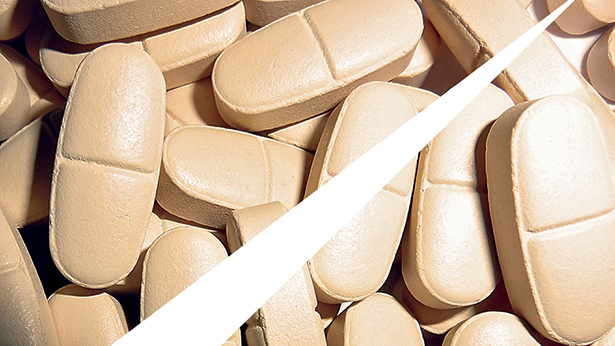Frequently, we get asked if it’s okay to split Clavamox chew tabs. These tablets are scored, which seems to indicate splitting is okay, but they are individually packaged, and the manufacturer indicates they should be dosed using the whole tablet.
To figure out the best recommendation, we first need to consider what the risks are with splitting tablets that are not designed to be split.
The drug may not be evenly distributed. While this is a theoretical concern, the more clinically applicable concern is whether the tablet can be reliably split into equal parts. Based on the manufacturing process, the drug is likely to be distributed equally. To help prevent issues with uneven splitting, it’s important to split just one tablet at a time. Instruct the client to use the remaining portion of the tablet for the next dose prior to splitting another tablet. For example, if you are splitting a 10-mg tablet and giving half twice a day, even if the patient doesn’t get exactly 5 mg for each dose, the daily total will still equal 10 mg.
The tablet may be difficult to split. Oblong or odd-shaped tablets are especially problematic to split. Some pills can be halved but not quartered. In these cases, it’s important to consider how practical your dosing is. For example, carprofen tablets are oblong and pretty easy to split in half. However, it’s quite difficult to quarter these without them crumbling. The carprofen chew tabs lend themselves to quartering better due to their square shape.
The drug stability and/or release mechanism may be affected. The “Do Not Crush List,” which can be found at ismp.org/ recommendations/do-not-crush, identifies human medications for which the formulation may be altered by splitting or crushing. However, in veterinary medicine, we may split medications on this list. It is beneficial to look into references or consult a pharmacist (you are welcome to call us), for more information on specific medications in this category. If a medication is labeled extended-release or something similar or it’s in a blister pack, those are indications there may be a concern with release properties or stability when splitting.
For our Clavamox example above, the tablet is scored, which makes it relatively easy to halve, but it’s in a blister pack, which brings to question its stability. Clavamox is sensitive to the air, so after the blister is opened, the drug is going to degrade more quickly. Therefore, if you split this tablet, we recommend wrapping the remaining half tablet in foil and putting it inside of a pill bottle to protect it from air. The remaining partial tablet should be used for the next dose, so it’s only being kept for 12 hours.
If you have questions about splitting a specific medication, feel free to contact our pharmacists at 217-333-5329.
This month’s column is from Lauren Forsythe, PharmD, DICVP, FSVHP.




